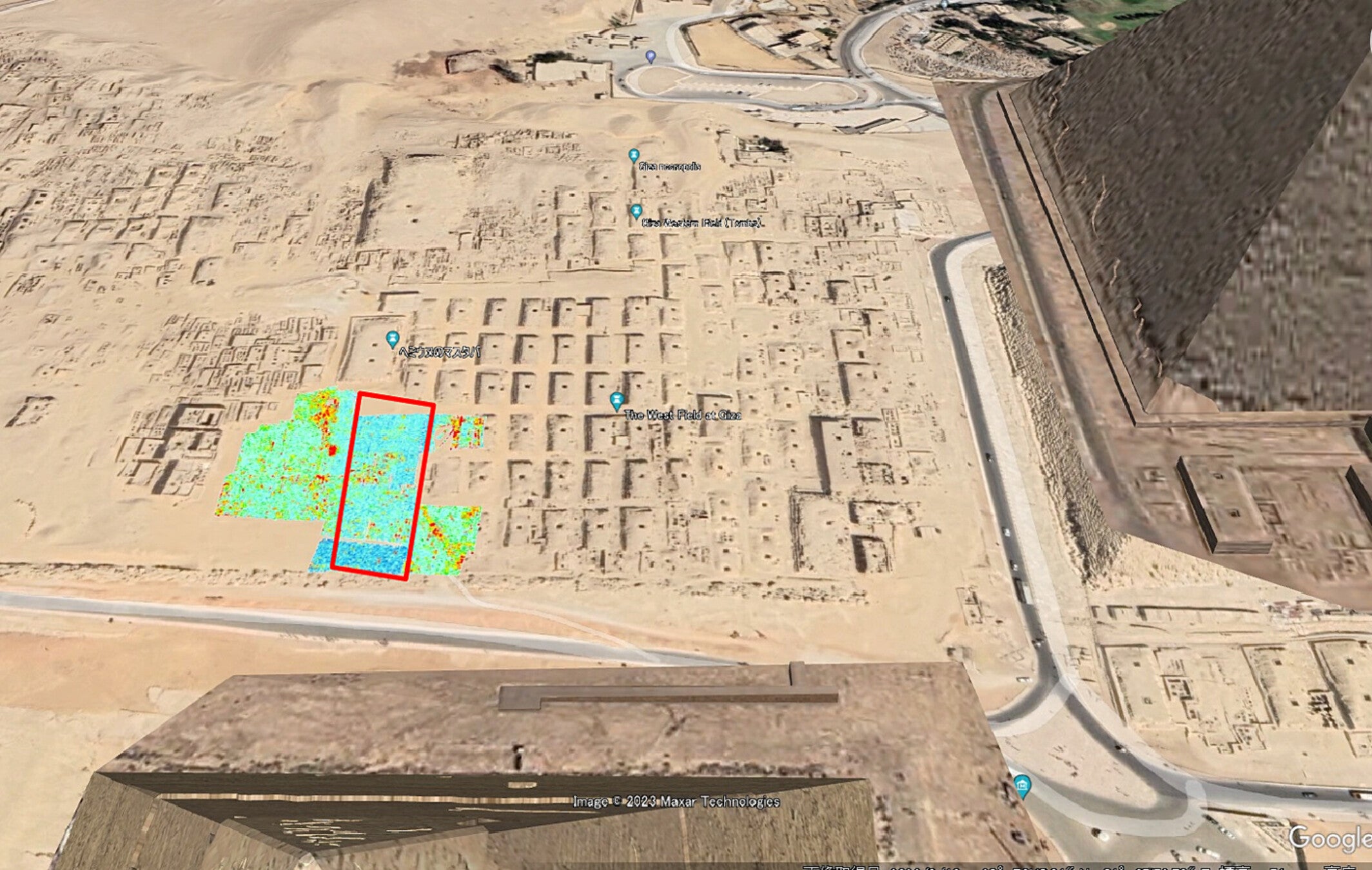
Archaeologists have stumbled upon what they described as a large “anomaly” buried under the Giza pyramid complex in Egypt.
Researchers used new tools like ground-penetrating radar to assess the area under the Western Cemetery in Giza to see if anything undiscovered was buried there.
They discovered a pair of underground structures – one shallow, the other deep – beneath a royal graveyard near the 4,500-year-old Great Pyramid.
The archaeologists described the structures as an anomaly because their density differs from that of the surrounding ground.
They believe the structures are man-made due to their shape and suspect that they were backfilled after construction.
“The Western Cemetery at Giza is known as an important burial place of members of the royal family and high-class officers,” the archeologists wrote, adding that an initial survey by ground-penetrating radar and electrical resistivity tomography revealed “an anomaly in the north of the survey site”.
“The area of the anomaly could be established approximately, but the structure and the location were unclear.”

The shallow structure measures 10m wide by 15m long and is less than under 2m deep.
The researchers suspect that it was built to support the construction of the larger, deeper structure which is about 5m at its shallowest point and 10m at its deepest.
Such an anomaly, the researchers said, may have been caused either by a mixture of sand and gravel or by “sparse spacing with air voids.”
“It may have been an entrance to the deeper structure,” they said.
“We believe that the continuity of the shallow structure and the deep large structure is important. From the survey results, we cannot determine the material causing the anomaly, but it may be a large subsurface archaeological structure.”
They hope a careful excavation of the site could help determine the nature of these structures.







